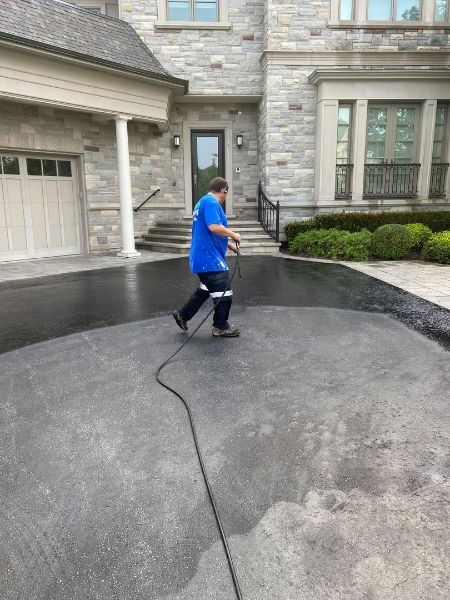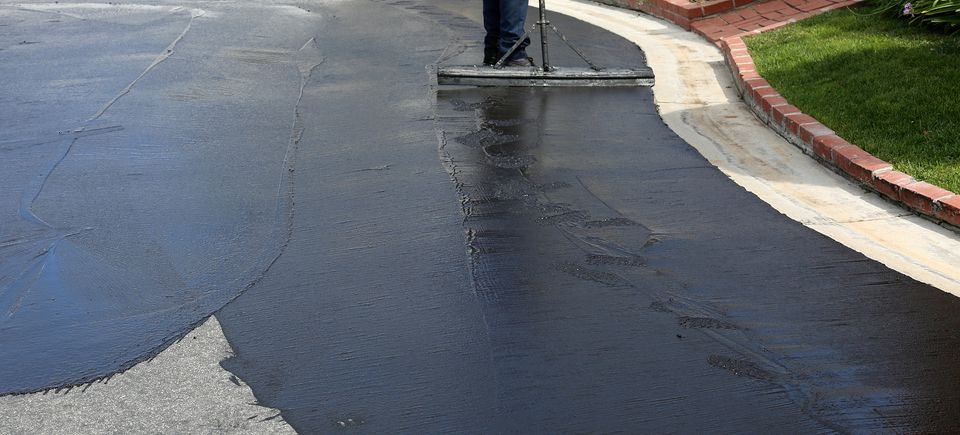Hot Mix Asphalt: A Sustainable Option for Sidewalk
Warm Mix Asphalt (HMA) has actually emerged as a leading sustainable choice for pavement services, using a myriad of ingenious innovations and ecological advantages. Its capacity to reuse products and lower energy usage provides a compelling situation for its adoption in road building and construction projects. Additionally, the long-lasting performance and longevity of HMA make it a recommended alternative for infrastructure growth. As the need for eco-friendly construction techniques expands, checking out the nuances of HMA's sustainability can give beneficial insights right into the future of sidewalk services.
Environmental Benefits of Hot Mix Asphalt

In Addition, Warm Mix Asphalt assists to mitigate city heat island impacts. Its dark color absorbs sunshine, lowering the amount of warmth mirrored back right into the ambience compared to lighter-colored pavements. This can decrease ambient temperature levels in metropolitan locations, decreasing the need for cooling and eventually lowering energy intake.
Additionally, Hot Mix Asphalt adds to enhanced stormwater monitoring. Its porous nature permits water to penetrate the sidewalk and recharge groundwater products, decreasing overflow and the danger of flooding. These ecological advantages make Warm Mix Asphalt a sustainable option for leading roadways and freeways.
Energy Effectiveness in HMA Manufacturing
Is power performance an essential consider the manufacturing of Warm Mix Asphalt (HMA)? Definitely. Power plays a significant function in the manufacturing of HMA, affecting both expense and environmental sustainability. One crucial element of power efficiency in HMA production is the use of warm mix asphalt (WMA) modern technologies (commercial parking lot paving). WMA enables the mixing and positioning of asphalt at reduced temperatures compared to conventional hot mix asphalt, resulting in decreased energy consumption during manufacturing. This procedure not just reduces gas usage yet additionally reduces greenhouse gas discharges, making it a much more eco-friendly alternative.
Additionally, improvements in plant technologies have led to even more energy-efficient HMA production processes. Modern plants are created with functions like recycled asphalt sidewalk (RAP) processing abilities, effective burner systems, and enhanced insulation, all contributing to power cost savings. By optimizing power usage in HMA manufacturing, the market can reduce its carbon impact while maintaining high-quality pavement products. Energy performance is, as a result, a vital consideration in making certain the sustainability of Warm Mix Asphalt manufacturing.
Recyclability of Hot Mix Asphalt
The recyclability of Warm Mix Asphalt (HMA) is a critical facet of its sustainability and long-term environmental effect. HMA is one of the most recycled products in the United States, with over 100 million heaps of redeemed asphalt pavement (RAP) being recycled every year in brand-new sidewalk building. Reusing HMA offers numerous ecological advantages, such as decreasing the requirement for virgin products, reducing energy intake during manufacturing, and lowering the quantity of waste sent to garbage dumps.
The procedure of reusing HMA entails crushing the existing pavement, squashing it right into smaller sized items, and blending it with brand-new accumulation and asphalt binder to produce a recycled mix. This recycled mix can commonly do along with and even far better than conventional HMA, while requiring fewer resources and producing lower greenhouse gas discharges. By integrating RAP into new pavement projects, road companies can save natural deposits, decrease costs, and lessen the ecological impact of road building and maintenance activities. Overall, the recyclability of HMA plays a considerable function in promoting lasting techniques within the sidewalk industry. click here for more info

Long-Term Efficiency of HMA
Asphalt sidewalks show durability and durability over a prolonged duration, mirroring the long-term performance of site web Hot Mix Asphalt (HMA) The longevity of HMA can be credited to its ability to hold up against rush hour lots, harsh climate condition, and the effects of aging. Research studies have shown that well-designed and properly constructed HMA sidewalks can last for two decades or even more with routine maintenance. The secret to maximizing the lasting efficiency of HMA hinges on making use of high-grade products, following finest practices in construction, and implementing effective upkeep methods. Proper drainage, regular examinations, and prompt repair work are important for maintaining the structural stability of HMA pavements with time. Furthermore, developments in HMA innovation, such as making use of polymer-modified binders and warm mix asphalt, have further boosted the toughness and long life of HMA sidewalks. By prioritizing top quality building and upkeep methods, HMA remains to show itself as a economical and sustainable option for lasting sidewalk facilities.

HMA: Sturdiness and Sustainability
Demonstrating both toughness and sustainability, Hot Mix Asphalt (HMA) has actually ended up being a foundation in the construction of lasting pavement frameworks - regrading. investigate this site HMA's resilience originates from its capability to withstand hefty lots, severe weather, and high traffic quantities, making it a reputable option for streets, freeways, and airport terminal paths. The structure of HMA, which generally includes aggregates, binder, and filler, plays a crucial function in boosting its durability and resistance to deterioration
Additionally, HMA's sustainability exists in its recyclability and energy-efficient production process. The capability to reuse recovered asphalt sidewalk (RAP) in new HMA mixtures lowers the demand for virgin products and decreases the environmental influence of sidewalk building and upkeep. In addition, the energy effectiveness of generating HMA lies in its lower mixing temperature levels contrasted to other pavement products, bring about reduced energy usage and greenhouse gas emissions.
Verdict
Finally, hot mix asphalt (HMA) provides a sustainable remedy for sidewalk with its eco-friendly attributes. HMA's recyclability, power performance in manufacturing, and lasting sturdiness make it a green selection for roadway building and construction. By conserving natural sources, decreasing waste, and reducing greenhouse gas emissions, HMA plays a vital duty in advertising sustainability in infrastructure advancement. Its capability to alleviate metropolitan warm island effects even more underscores its value in developing ecologically conscious and resilient sidewalk systems.
HMA is one of the most recycled materials in the United States, with over 100 million loads of reclaimed asphalt sidewalk (RAP) being reused annually in brand-new sidewalk construction.The procedure of recycling HMA involves crushing the existing pavement, crushing it right into smaller items, and mixing it with brand-new accumulation and asphalt binder to develop a recycled mix.Asphalt pavements show sturdiness and resilience over an extensive period, mirroring the long-lasting efficiency of Hot Mix Asphalt (HMA) In addition, improvements in HMA technology, such as the usage of polymer-modified binders and warm mix asphalt, have actually even more boosted the sturdiness and longevity of HMA pavements. The capacity to reuse reclaimed asphalt sidewalk (RAP) in brand-new HMA mixes lowers the demand for virgin products and minimizes the ecological impact of sidewalk construction and maintenance.